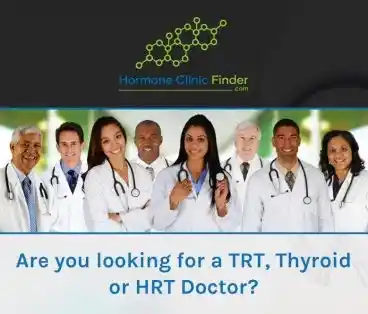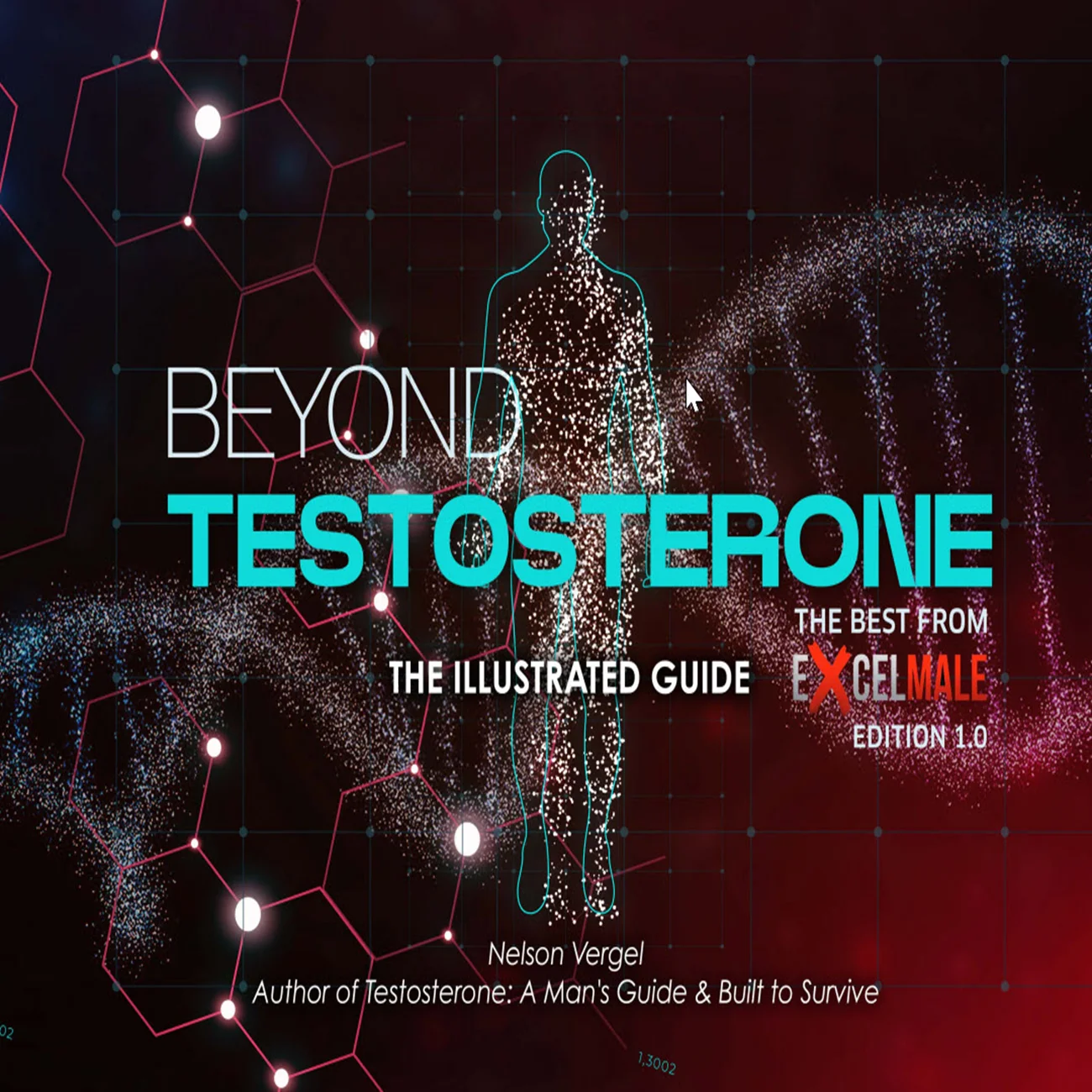Does testosterone therapy increase the risk of atrial fibrillation? The relationship between TRT and heart arrhythmias is more nuanced than headlines suggest. Recent research points to a U-shaped curve—both very low AND very high testosterone levels may increase AFib risk, while optimal mid-range levels appear protective.
This analysis examines the clinical evidence on testosterone and atrial fibrillation, including the TRAVERSE trial findings, and discusses what this means for men on TRT. Understanding the dose-response relationship can help you and your doctor optimize your protocol for both symptom relief and cardiovascular safety.
The Relationship Between Testosterone Therapy and Atrial Fibrillation: A U-Shaped Curve Hypothesis
Executive Summary
An analysis of clinical research on testosterone therapy and cardiovascular health reveals a complex, non-linear relationship, particularly concerning the risk of atrial fibrillation (AFib). While early observational studies and the recent TRAVERSE trial raised concerns about increased arrhythmia risk with testosterone treatment, a deeper synthesis of the data points to a more nuanced conclusion. The central thesis is that the effect of testosterone on AFib follows a "U-shaped curve," where both low and high serum testosterone levels are associated with an elevated risk of AFib, while a specific mid-range concentration is associated with the lowest incidence.
Data from large-scale prospective studies, including the UK Biobank, suggest this optimal therapeutic window for minimizing AFib risk lies between approximately 350 and 550 ng/dL. This finding reconciles the seemingly contradictory results from different studies; the TRAVERSE trial, which targeted a broader range of up to 750 ng/dL, may have inadvertently pushed some participants into the higher-risk portion of the curve. This indicates that successful therapeutic application requires careful management of testosterone levels to remain within this narrow beneficial range, alongside thorough assessment of individual patient risk factors like sleep apnea.

Background: Testosterone and Cardiovascular Health
Testosterone exerts numerous physiological effects on the cardiovascular system. At physiological levels, it is understood to influence:
• Endothelial Function and Hemodynamics: Affects the lining and function of blood vessels.
• Inflammation: Plays a role in cardiovascular inflammation.
• Conduction Tissue: Impacts the heart's electrical system, which is directly related to conditions like atrial fibrillation. It has been shown to shorten the QT interval, potentially improving the anti-arrhythmic substrate.
• Myocardial Protection: May decrease reperfusion injury following a myocardial infarction (MI).
• Thrombosis: The link to thrombosis has been a significant concern. However, much of the data suggesting testosterone is pro-thrombogenic originated from ex vivo bench research where patient blood was tested outside the body, and the quality of these early studies has been questioned.
Historically, general observational data has associated low testosterone with higher overall mortality.
Initial Signals of Cardiovascular Risk
Concerns regarding adverse cardiovascular events associated with testosterone therapy were significantly influenced by two key data sets:
1. The P-Trial: This study observed a potential signal for a higher rate of MI or arrhythmic events. However, its primary endpoint was fracture risk, not cardiovascular outcomes, making these findings secondary and not definitively tested.
2. Vigen Data (VA Database): This analysis of a high-risk population of patients in the Veterans Affairs system undergoing cardiac catheterization suggested that testosterone was associated with a higher rate of cardiovascular events.
These findings, derived from database extractions and studies not primarily designed for cardiovascular assessment, created significant concern and prompted more rigorous investigation, including the research that ultimately led to the FDA demanding a large-scale trial like TRAVERSE.
Observational Evidence for Testosterone Normalization
In contrast to the initial signals of harm, a series of comprehensive observational studies conducted within the VA system on all-comers found that normalizing low testosterone was associated with improved outcomes or an absence of harm. These studies categorized truly hypogonadal men into three groups for comparison:
1. Untreated: Diagnosed with low testosterone but received no treatment.
2. Treated, Not Normalized: Received testosterone therapy, but levels did not reach the normal range.
3. Treated and Normalized: Received therapy and achieved normal testosterone levels.
The key findings from these studies are summarized below:
These findings were further supported by other large observational datasets:
• Rosenberg et al.: In approximately 1,000 men (average age 65), decreased testosterone levels were a high-risk factor for developing AFib.
• Framingham Data: In men aged 55-69, every standard deviation decrease in testosterone was associated with an increased incidence of AFib.
Reconciling with the TRAVERSE Trial: The U-Shaped Curve Hypothesis
The TRAVERSE trial, a major cardiovascular outcomes study, reported that testosterone therapy was associated with a higher incidence of non-fatal arrhythmia and atrial fibrillation. This appears to directly contradict the body of observational evidence suggesting normalization is protective. The reconciliation of these findings lies in the hypothesis that the effect of testosterone on AFib is not linear.
Evidence for this "U-shaped curve" comes from two recent, large-scale prospective studies:
1. Zhao et al. (UK Biobank): This study followed 173,000 men for 11 years. It found that the risk of AFib was lowest when testosterone levels were between 10 and 15 nmol/L. Risk was elevated at levels both below and above this range.
2. Post-hoc Analysis: A separate analysis of 4,000 people demonstrated a similar curve, with the lowest event rate occurring when testosterone levels were between 10 and 20 nmol/L.
This U-shaped dose-response relationship provides a compelling explanation for the divergent results in the medical literature.
The Therapeutic Window and Clinical Implications
The optimal testosterone range identified in the prospective studies (10-20 nmol/L) translates to approximately 350 to 550 ng/dL. This suggests a narrow therapeutic window for minimizing AFib risk.
This insight directly informs the interpretation of the TRAVERSE trial. The TRAVERSE protocol targeted a therapeutic range of 350 to 750 ng/dL. By aiming for levels as high as 750 ng/dL, the trial may have pushed a subset of patients beyond the optimal mid-range and into the higher-risk zone of the U-shaped curve, thereby generating the observed increase in AFib events.
Key Clinical Conclusions
• Non-Linear Effect: The relationship between testosterone levels and AFib risk is not linear. Both deficiency and excess are associated with increased risk.
• Narrow Therapeutic Range: The data suggest an optimal range for minimizing AFib risk is approximately 350-550 ng/dL. Treatment should be carefully titrated to target this mid-range.
• Patient-Specific Risk Factors: Individual patient characteristics are critical. For example, testosterone therapy can exaggerate sleep apnea, which is an independent and powerful trigger for atrial fibrillation. Clinicians must identify and manage such interacting risk factors.
As stated in the source, "The effect of testosterone on AFib is not linear on atrial fibrillation. It's likely a U-shaped curve with the lowest incident occurring between mid-range values of concentration." The complete body of evidence indicates that while low testosterone is a risk factor for AFib, treatment must be managed precisely to avoid the risks associated with excessively high levels.

This analysis examines the clinical evidence on testosterone and atrial fibrillation, including the TRAVERSE trial findings, and discusses what this means for men on TRT. Understanding the dose-response relationship can help you and your doctor optimize your protocol for both symptom relief and cardiovascular safety.
The Relationship Between Testosterone Therapy and Atrial Fibrillation: A U-Shaped Curve Hypothesis
Executive Summary
An analysis of clinical research on testosterone therapy and cardiovascular health reveals a complex, non-linear relationship, particularly concerning the risk of atrial fibrillation (AFib). While early observational studies and the recent TRAVERSE trial raised concerns about increased arrhythmia risk with testosterone treatment, a deeper synthesis of the data points to a more nuanced conclusion. The central thesis is that the effect of testosterone on AFib follows a "U-shaped curve," where both low and high serum testosterone levels are associated with an elevated risk of AFib, while a specific mid-range concentration is associated with the lowest incidence.
Data from large-scale prospective studies, including the UK Biobank, suggest this optimal therapeutic window for minimizing AFib risk lies between approximately 350 and 550 ng/dL. This finding reconciles the seemingly contradictory results from different studies; the TRAVERSE trial, which targeted a broader range of up to 750 ng/dL, may have inadvertently pushed some participants into the higher-risk portion of the curve. This indicates that successful therapeutic application requires careful management of testosterone levels to remain within this narrow beneficial range, alongside thorough assessment of individual patient risk factors like sleep apnea.
Background: Testosterone and Cardiovascular Health
Testosterone exerts numerous physiological effects on the cardiovascular system. At physiological levels, it is understood to influence:
• Endothelial Function and Hemodynamics: Affects the lining and function of blood vessels.
• Inflammation: Plays a role in cardiovascular inflammation.
• Conduction Tissue: Impacts the heart's electrical system, which is directly related to conditions like atrial fibrillation. It has been shown to shorten the QT interval, potentially improving the anti-arrhythmic substrate.
• Myocardial Protection: May decrease reperfusion injury following a myocardial infarction (MI).
• Thrombosis: The link to thrombosis has been a significant concern. However, much of the data suggesting testosterone is pro-thrombogenic originated from ex vivo bench research where patient blood was tested outside the body, and the quality of these early studies has been questioned.
Historically, general observational data has associated low testosterone with higher overall mortality.
Initial Signals of Cardiovascular Risk
Concerns regarding adverse cardiovascular events associated with testosterone therapy were significantly influenced by two key data sets:
1. The P-Trial: This study observed a potential signal for a higher rate of MI or arrhythmic events. However, its primary endpoint was fracture risk, not cardiovascular outcomes, making these findings secondary and not definitively tested.
2. Vigen Data (VA Database): This analysis of a high-risk population of patients in the Veterans Affairs system undergoing cardiac catheterization suggested that testosterone was associated with a higher rate of cardiovascular events.
These findings, derived from database extractions and studies not primarily designed for cardiovascular assessment, created significant concern and prompted more rigorous investigation, including the research that ultimately led to the FDA demanding a large-scale trial like TRAVERSE.
Observational Evidence for Testosterone Normalization
In contrast to the initial signals of harm, a series of comprehensive observational studies conducted within the VA system on all-comers found that normalizing low testosterone was associated with improved outcomes or an absence of harm. These studies categorized truly hypogonadal men into three groups for comparison:
1. Untreated: Diagnosed with low testosterone but received no treatment.
2. Treated, Not Normalized: Received testosterone therapy, but levels did not reach the normal range.
3. Treated and Normalized: Received therapy and achieved normal testosterone levels.
The key findings from these studies are summarized below:
| Study Population & Focus | Outcome for "Treated and Normalized" Group |
| All-comers without prior cardiovascular disease | Improved Outcomes: Showed improved mortality and reduced rates of MI and stroke compared to the untreated group. |
| Patients with a previous Myocardial Infarction (MI) | No Signal of Harm: Did not demonstrate the mortality benefit seen in the healthier cohort, but critically, showed no evidence of the harm that had been previously proposed. |
| Atrial Fibrillation (Published 2017) | Reduced Incidence: Normalization of testosterone was directly associated with a decreased incidence of atrial fibrillation. |
These findings were further supported by other large observational datasets:
• Rosenberg et al.: In approximately 1,000 men (average age 65), decreased testosterone levels were a high-risk factor for developing AFib.
• Framingham Data: In men aged 55-69, every standard deviation decrease in testosterone was associated with an increased incidence of AFib.
Reconciling with the TRAVERSE Trial: The U-Shaped Curve Hypothesis
The TRAVERSE trial, a major cardiovascular outcomes study, reported that testosterone therapy was associated with a higher incidence of non-fatal arrhythmia and atrial fibrillation. This appears to directly contradict the body of observational evidence suggesting normalization is protective. The reconciliation of these findings lies in the hypothesis that the effect of testosterone on AFib is not linear.
Evidence for this "U-shaped curve" comes from two recent, large-scale prospective studies:
1. Zhao et al. (UK Biobank): This study followed 173,000 men for 11 years. It found that the risk of AFib was lowest when testosterone levels were between 10 and 15 nmol/L. Risk was elevated at levels both below and above this range.
2. Post-hoc Analysis: A separate analysis of 4,000 people demonstrated a similar curve, with the lowest event rate occurring when testosterone levels were between 10 and 20 nmol/L.
This U-shaped dose-response relationship provides a compelling explanation for the divergent results in the medical literature.
The Therapeutic Window and Clinical Implications
The optimal testosterone range identified in the prospective studies (10-20 nmol/L) translates to approximately 350 to 550 ng/dL. This suggests a narrow therapeutic window for minimizing AFib risk.
This insight directly informs the interpretation of the TRAVERSE trial. The TRAVERSE protocol targeted a therapeutic range of 350 to 750 ng/dL. By aiming for levels as high as 750 ng/dL, the trial may have pushed a subset of patients beyond the optimal mid-range and into the higher-risk zone of the U-shaped curve, thereby generating the observed increase in AFib events.
Key Clinical Conclusions
• Non-Linear Effect: The relationship between testosterone levels and AFib risk is not linear. Both deficiency and excess are associated with increased risk.
• Narrow Therapeutic Range: The data suggest an optimal range for minimizing AFib risk is approximately 350-550 ng/dL. Treatment should be carefully titrated to target this mid-range.
• Patient-Specific Risk Factors: Individual patient characteristics are critical. For example, testosterone therapy can exaggerate sleep apnea, which is an independent and powerful trigger for atrial fibrillation. Clinicians must identify and manage such interacting risk factors.
As stated in the source, "The effect of testosterone on AFib is not linear on atrial fibrillation. It's likely a U-shaped curve with the lowest incident occurring between mid-range values of concentration." The complete body of evidence indicates that while low testosterone is a risk factor for AFib, treatment must be managed precisely to avoid the risks associated with excessively high levels.
Last edited:













